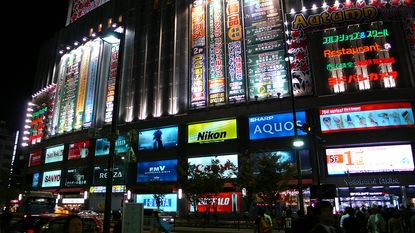

It is not a surprise that the retro gaming phenomenon that has grown massively over the last 15 years or so has now, in terms of hype and cult following, surpassed the normal current generation of video games.
If you followed our daily coverage from E3 this year (day 1, day 2, and day 3) you already know how the big video game software companies are, increasingly, only producing secure IPs to keep their market share and profit in tact, as if they didn’t they would be punished by the stock market (see Capcom's 7~9% fall with the release of Resident Evil 7: Biohazard).
So from the beginning of the 2000s "new concept" games such as Rez or Shenmue, and/or innovative ideas logically shifted toward the production of less expensive and safe mobile games with established IPs and established, mainstream genres. Naturally, hardcore gamers criticised the lack of innovation in these new titles, however, as we mentioned in our E3 reports, hardcore gamers do not dictate the industry and the industry remained locked on the same course, which is something that is still in evidence today.
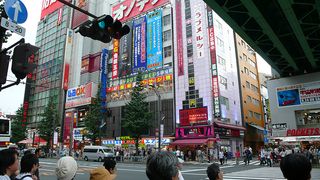
The more mainstream revaluation of older generations of games started, arguably, in the mid 1990s with the release of the heyday arcade emulator 'Mame', which for the first time on a normal PC allowed a whole generation of gamers to replay games lost and forgotten about, games that used to live in the arcade centres years before.
This phenomenon (than labelled by video game magazines as ‘retro gaming’) has year by year grown in the gamer community as a new trend, not just for the joy of rediscovering golden age classics from the mid 70s and 80s, but also for the millennials who were born later and never got chance to play them. For many millennials classic games such as: Pac-Man, Super Mario, Donkey Kong, Dragon's Lair, and OutRun are unheard of, let alone titles they have actually played.
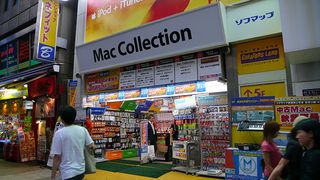
This trend has grown so significantly that even giants such as Gamestop have started to resell retro games in big numbers thanks to the growing demand, while Sony and many other publishers have started to resell them online in the form of HD remasters (examples include: Resident Evil, Final Fantasy, Metal Gear Solid, etc), or selling these older titles as DLC directly on online shops such as the PS store or Xbox Live.
In Japan though this phenomenon hasn’t really happened as, simply put, retro gaming never went away to begin with. Due to its historical respect for the culture of video gaming, plethora of second hand video game shops, and the fact that many of the industry's foremost companies are based in Japan (Sega, Namco and Nintendo in particular), classic video games are played throughout Japan.
Sign up to the T3 newsletter for smarter living straight to your inbox
Get all the latest news, reviews, deals and buying guides on gorgeous tech, home and active products from the T3 experts
Welcome to the retro gaming district
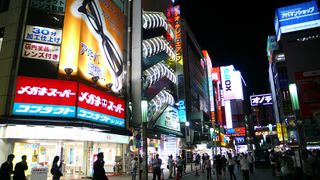
And, talking of retro shops, the biggest and best shops are strictly concentrated and located in two places, or to be exact in two streets: the Den Den town of Akihabara (in Tokyo) and Nippon Bashi (in Osaka).
Unlike in the west, in Japan 80 per cent of a specific category of products (example: clothes, pro-audio, and video games) are gathered and sold all together in just a single street or a single square (labelled -Ku, example: Shibuya-ku for the clothes).
Now many people may think the the shops that sell the most and the rarest games are not on the main street (apart Retrocamp), but actually they are all around the block in buildings of different sizes and on different floors (contrary to the west here most of the buildings from basement to the top floor are pure shop). This is because the rent for this "concentration" is very, very high, and logically the big distributor chains such as Laox, SofMap and Trader pay top dollar to resell the current generation's games in the best, street-level, main street locations.
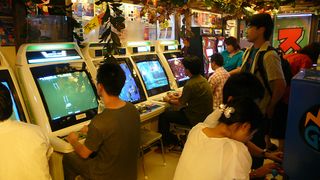
In fact, because of this situation most Japanese retro game shops have to constantly change locations to keep the costs down and be able to survive while making enough profit to live.
Of course, retro gaming compared to the current gen's market is a niche, but thanks to the internet economy and the devaluation of the Yen (thanks primarily because of Abenomics) has brought more western tourists coming specifically for theses old consoles and games. Unfortunately, what appears to be a good thing for retro gaming, is also where a real problem lies, with a distortion between reality and perception being manufactured.
While it is not rare to find posts on forums or social networks from anonymous users claiming to have bought rare games such as Sapphire, Dead of the Brain, Dracula X for PC Engine, Radiant Silvergun,Tower of Doom for Sega Saturn, or Metal Gear Solid Gold version for peanuts, the reality of the retro gaming shops here is, in almost every case, far from what these anonymous westerners claim them to be, something that we will fully demonstrate below.
Retro gaming in Japan has been part of the video game culture since its boom in the late 70s and has always received respect, devotion and a following. Even in the days before the internet went mainstream in the 90s, in Japan - already in the 80s - Mooks (portmanteau of "magazine" and "book") were printed out in large quantities with the story, specs and details of many retro games.
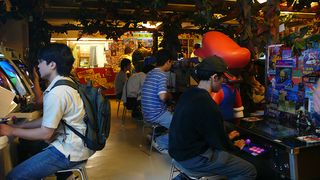
Another good example of what I am talking about can be seen in the rare OutRun Laserdisc published Sony.
So from this it is pretty clear how in the land of the rising sun masterpieces like OutRun, Space Invaders, and Mario in their various formats (Ex: Arcade Pcb, Mooks, LDs, Vhs) and conversions (Ex: Famicom, PC Engine, Saturn) have always been objects of cult and collection.
While in the west during the 80s and 90s the gamers moved along with the market (example: from NES to SNES, or Master System to Mega Drive) selling off immediately all their old stuff and not keeping it, in Japan the phenomenon of collecting the old stuff was already present, with dedicated shops.
And this still happens today, where the average Joe goes into the big chains and sells all their books, DVDs and video games for 1/3 of the value.
From this the Japanese gamer gets the money they needs to buy other things they want, and also to generate the space in the comparatively small apartments in which they live (trust me, I’ve lived in Japan a long time).
And it is from this situation that Japanese retro gaming shops such as Super Potato, Mandarake, Trader and Retrocamp were born, and today keep on buying and selling retro consoles and games.
Everything you’ve read is a lie
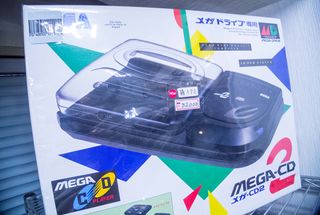
The problem is that, unlike what that anonymous user said on that forum the other night, games and other retro goods do NOT sell for peanuts in Japan’s stores. To be more precise, Japanese retro game collectors are extremely exigent when it comes to a matter of quality and, as such, demand the best quality products. Naturally, the best quality products cost serious money.
A famous proverb in Japan translates roughly as that it is "better a precise thing in a small thing than in a big one", which tries to convey that, contrary to the dominant view in the west, bigger here is not automatically better. Quality very much counts over quantity.
So more than quantity, Japanese (and in this case collectors) really pay attention to each little scratch on the cover and/or on the CD, not to mention if it is missing even some little useless parts of the original console package (such as the original manufacturer guarantee). All these things really matter here and, logically, they are reflected in the prices shown.

A clear example of what I am saying can be seen in what it costs to buy a real NOS PC Engine RX: 150,000 yen (approx. $1,315/ £1,020 GBP).
You can find a PC Engine RX on eBay for half the price, however, it is not the same quality in terms of being a completed, quality package.
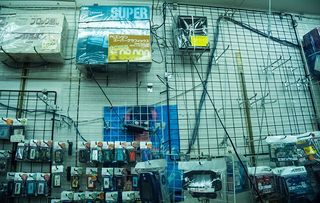
Another good example can be seen here with this NOS / real mint Super Grafx that is listed for 98,000 yen (approx. $860/ £667 GBP).
This is a price that to a collector in the west (even not factoring in shipping, eight per cent local VAT and the custom duties from Japan) would be considered way too high and a “rip off” because they are used to dealing with eBay-quality products and their lower costs.
And eBay-quality compared to genuine Japanese retro gaming shops really, really sucks.
It’s all about the grades
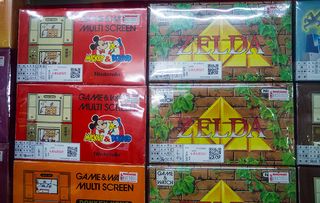
And here we arrive at what most people don’t know about the Japanese retro gaming market; there are four different grades of quality: A, A', B and C.
Each one guarantees good quality overall, and B certainly doesn't mean the console is junk, but rather that there are little visible defects.
Another good example can be seen in Nintendo's handhelds. In this case we can see with the original Japanese handheld of Zelda in three different conditions: A, A' and B.
Naturally they differ in price from 29,000 yen (approx. $255/ 195 GBP) to 47,000 yen (approx. $410/ 320 GBP).
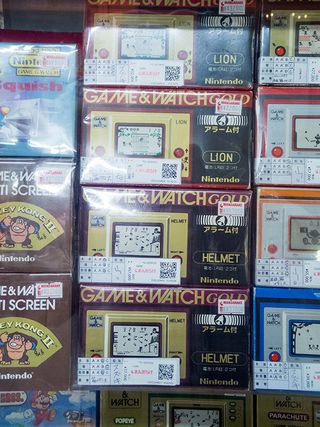
Grade A means a mint console, A' a very good condition console, B a good console with some little defects, and C a good system but with some major defect (such as a massive scratch or, say, lack of instruction manual).
If the game or console is not rated it means that it has really big problems or missing components such as boxes or accessories (all issues are usually written on a sticker on the package).
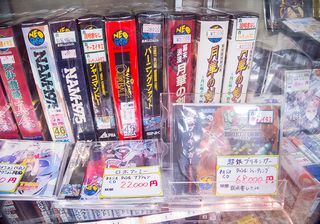
In contrast to this, on the internet and especially on eBay, it is grade C or less quality items (compared to Japanese shops) that are put up for sale and bought by westerners - essentially the products listed on eBay are the trash that struggles to sell in Japan. There are some exceptions, naturally, however it seems pretty consistent from my experience.
Often supposedly mint items on eBay aren’t mint, especially compared to those available in Japanese retro gaming shops too. A clear example can be seen here by checking the mighty Mario Bros.
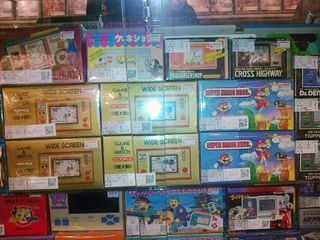
Even in this case the price differs from 13,000 yen (approx. $115/ 85 GBP) to 27,000 yen (approx. $235/ 183 GBP). A rare first NES version (not yellowed and complete) costs 24,000 yen (approx. $215 / £165 GBP).
Apart the difference in quality that a collector can find right here, the quantity - especially on really rare games and console - is really outstanding too and surpasses eBay easily.

Just to get an idea take a look at this complete full set of the rare Tomy Pyūta at 200,000 yen (approx. $1797 / £1379 GBP), or a "B" ranked non-yellowed original Famicom at 27,800 yen (approx. $249 / £191 GBP).
So who actually buys these AAA+ rated items?
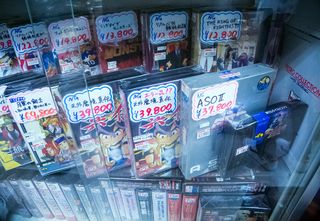
There are only two kinds of collectors who really buy these rare gems (that truly are in those top, top conditions): Japanese hardcore collectors, and some western collectors from the US or Europe that come in person to check piece by piece each console and pay in cash in some of these shops (a good example is 'Friends' in Akihabara that does not accept credit cards).
But in number they are a really small amount of people compared to the "normal" buyers and tourists that come right here now every year jacked up by tall or one-off tales on forums and social networks of picking up retro gaming merchandise for peanuts. Naturally, when they arrive here in Japan they discover the bitter truth about the Japanese retro gaming market, and they cannot buy what they thought they were going to before leaving.
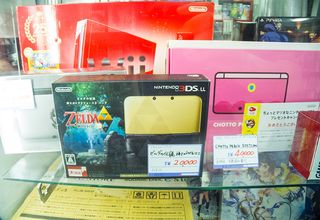
So what do they do then?
Simple, they end up inside these retro shops lurking near the "junk" basket (that is placed near the exit) where you can buy loose, broken or 'sold as-is' carts at 100 yen each, and/or outside the shops in the street with using a phone's calculator to check each price with a conversion app from yen to $, Euro or GBP (probably looking for some mythical bargain that, almost certainly, doesn't exist).
Surely the games aren’t as bad as the technology though, right?
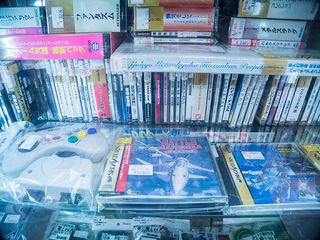
Things are not really different from what I’ve mentioned above to be honest. For example, this Battle Garegga for Sega Saturn costs 32,800 yen (approx. $288/ 220 GBP). If we check on eBay though we can find copies of the game, in not as good condition of course, for $195.
Another example is Stellar Assault at 49,800 or DonDon Pachi at 29,000 yen, again, hardly a "steal" or peanuts in terms of cost.
So is Japan the place to go to buy retro gaming stuff?
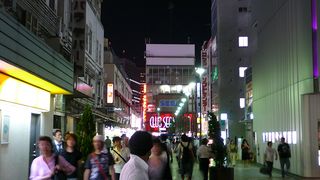
The answer is - it depends.
If you are looking for NOS or really mint retro gaming consoles that here in Europe or the US you will never see (and that logically are sold at higher prices here), and are ready to pay whatever it takes to bring them home, the answer is YES definitely.
If quality is your goal (i.e. to have at home a PERFECT Neo-Geo AES or PC Engine) then Japan is definitely the place you should go.
But if you are looking for a bargain, a loose retro item or to pick up a not NOS console or accessory: the answer is NO.
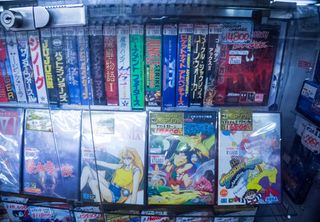
Why?
Because it will be cheaper to find them on eBay, and you won’t have the necessary costs of going to Japan (flight, food and hotel) to factor in.
We understand for many that this will be a little of an anti-climax, but we feel it is our role as journalists to uncover the hidden truths of the retro gaming industry in Japan. We did the same last year when we reported in on Sony’s PS4 woes in its native land, and will continue to do so going forward.
Next week we continue - be sure to check back in then.
Sayonara.
Marco Zangirolami has been reporting on the video game industry since 1996. During his career he has been a correspondent from Japan for the most important Italian firms, head of the 'Made in Japan' section on 'ConsoleMania' (the most important Italian video game magazine of all time) and 'Automat', the leading magazine of the Italian Jamma's Arcade Association. He is a contributor to T3.com, writing about the video game industry. In his spare time Marco likes to collect and restore classic arcade machines from the 1980s and 1990s.
-
 WhatsApp users just snagged a killer free upgrade which will change voice notes forever
WhatsApp users just snagged a killer free upgrade which will change voice notes foreverIt could speed up your time spent listening to voice notes
By Sam Cross Published
-
 This gigantic 100-inch TV deal is so darn good I might need to buy a new house
This gigantic 100-inch TV deal is so darn good I might need to buy a new houseHisense's 100-inch QLED TV is down to just $1,599 at Best Buy
By Mike Lowe Published